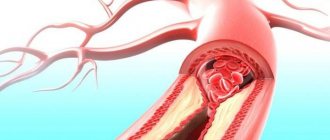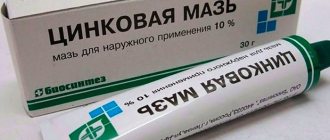Hypospadias in children is a disease caused by a deviation in the development of the urethra, expressed in the absence of a posterior wall at the child’s urethra. The disease is observed extremely rarely in newborn girls; it is a “male disease”, diagnosed in 0.67% of boys. The distal variety of hypospadias (coronal and capitate forms) accounts for the vast majority of cases, up to 85%. In only 5% of cases, the much more severe perineal form is observed. There is also a stem and scrotal form.
Occurrence of disease
It is important for parents to know about hypospadias what it is and why it occurs. This is a congenital anomaly characterized by disturbances in the development of the urethra and penis, resulting in the urethra being located in the wrong place. The frequency of the pathology is 1 case per 500 newborns.
It is impossible to identify specific causes for the development of the disease. Hypospadias occurs between 7 and 14 weeks of pregnancy, when the urethra is formed.
The disease occurs more often after IVF, which is associated with a high incidence of complications with this method of fertilization. Disturbances in the location of the urethra are accompanied by chromosomal diseases: Patau syndrome, Edwards syndrome, etc.
Causes of hypospadias
The causes of hypospadias are the influence of unfavorable factors on the development of the child in the womb at 7-15 weeks of pregnancy. Specific factors and signs of the development of hypospadias have not been precisely determined, since a study of the course of pregnancy of women who gave birth to boys with this disease did not reveal negative factors common to all cases. However, fathers of children with hypospadias have low sperm motility and impaired morphology.
Pathology options
The degree of underdevelopment of the urethra varies. Based on this, several types of hypospadias in newborn boys are distinguished:
- coronal form in which the external opening of the urethra is formed in the area of the coronal groove located on the head of the penis;
- capitate version - urethra at the base of the head;
- stem form - the opening of the urethra on the shaft of the penis;
- scrotal version with the opening of the urethra on any part of the scrotum;
- if the external opening of the urethra is located in the perineal area, then the perineal form of hypospadias is identified.
Less common is “hypospadias without hypospadias.” This is a variant of the disease when the urethra opens in the anatomically correct place, but the cavernous bodies of the penis are deformed.
general information
Hypospadias in boys - photo:
Hypospadias is a disease that is congenital. It manifests itself in the form of an atypical location of the urinary opening, when the opening of the urethra is located in the area of the shaft of the penis, or closer to the scrotum area.
This pathology does not arise as an independent deviation, but is often accompanied by other anomalies in the development of the genital organs (curvature of the penis, deformation of the foreskin, the presence of diseases of the genitourinary system).
Clinical manifestations
The most common variant of the pathology is capitate. It is detected in 70-80% of patients. The disease is characterized by painful urination due to stenosis of the urethra and the absence of a frenulum. During puberty, the deformation of the penis increases. Early surgery prevents the development of complications.
With the stem variant of the disease, normal urination is impossible. The penis is deformed. Erection is accompanied by severe pain. The coronal form is extremely rare and manifests itself with similar symptoms.
Scrotal and perineal forms of hypospadias are severe. The pathological location of the urethra leads to the impossibility of normal urination and pain.
Signs of violation
Each form of the disease has a number of characteristics characteristic of it:
- The capitate form of the anomaly is observed in 75% of clinical situations; it is considered a common variant of this disease - the opening of the urethra is located lower, it is narrowed, as a result of which the process of urination is difficult. Can be combined with deformation of the penis, which increases with the start of sexual relations;
- Coronal type of the disease - urination is impaired, deformation of the organ is noticeable. Urine excretion occurs in the form of a thin stream and requires effort;
- Trunk hypospadias – has variability in its development depending on the location of the meatus (different levels of the posterior surface of the penis). Urination is also difficult, organ deformation is observed, and painful sensations are noted in the erectile process. Trunk hypospadias does not prevent sexual intercourse, but during the process of ejaculation, sperm does not penetrate into the vaginal area;
- Scrotal hypospadias is recognized as a serious variant of this anomaly. The opening of the urethral opening occurs in the scrotum area, dividing it into two halves. An underdeveloped state of the organ is noted - the penis is deformed, similar to a hypertrophied clitoris, the scrotum itself is like the labia. Male newborns with this pathology are often mistaken for girls with adrenogenital disorder. The process of urination usually occurs in a sitting position; sexual intercourse with this type of disease is not possible due to the curvature of the organ. Irritation of the skin of the scrotum is also observed;
- Perineal hypospadias - the meatus is located behind the scrotum. The patient has a small organ and bifurcation of the scrotum. Establishing the gender of a newborn becomes a difficult process. This type of disease can be combined with the course of cryptorchidism, the development of an inguinal hernia, and the presence of hydrocele of the testicular membranes;
- Chord type pathology - there is a short, undeveloped urethra, which provokes deformation of the penis towards the bottom. The correct location of the meatus is noted. During the erectile process, the penis resembles the appearance of an onion; painful sensations are possible that interfere with normal sexual intercourse.
Negative consequences
Without treatment, the disease can cause complications. Boys with hypospadias experience inflammatory changes in the area of the urethral outlet, which leads to infections of the genitourinary system and reduced fertility in the future.
Surgical treatment also has a number of complications associated with pathology:
- formation of single or multiple urethral fistulas;
- urethral stenosis or development of diverticula;
- decreased or complete absence of sensitivity of the glans penis.
These conditions reduce a man’s quality of life and can cause mental disorders: depression, etc.
Why is it important to perform urethral hypospadias surgery early?
About 40 years ago, hypospadias correction was performed for boys over 3 years of age. It was believed that it was technically easier to perform surgical correction on a larger penis.
But later they drew attention to the fact that boys operated on at a conscious age develop significant physiological and psychological disorders.
Sometimes before surgery they resort to adjuvant hormone therapy, for which hormonal drugs are used. But this is done according to strict indications, after consultation with an endocrinologist. The goal is to increase penis size using testosterone and human chorionic gonadotropin.
Important
According to current standards, a boy with hypospadias should be operated on no later than 1.5 years.
Advantages of early surgical intervention for hypospadias:
- the younger the age, the better the regenerative ability of tissues;
- easier care of the penis after surgery: it is easier to put a diaper on the baby so as not to draw attention to the urinary catheter installed after the operation;
- at this age, boys do not have spontaneous erections, which increases the likelihood of postoperative suture dehiscence;
- The child’s psyche does not suffer, since at this age the baby remembers little.
The duration of surgery directly depends on the type of hypospadias and anomalies that need to be corrected.
On average, it takes 2 - 3 hours, but surgery for hypospadias can take longer.
Note that all interventions are performed under anesthesia, which facilitates surgical correction of the defect in a small child.
Diagnostic measures
Diagnosing the disease is not difficult. A pediatrician or neonatologist can identify urethral malposition immediately after birth. To confirm the diagnosis, an ultrasound of the pelvic organs is performed.
If chromosomal pathology is suspected, karyotyping is performed. A child with hypospadias consults a geneticist. The specialist identifies signs of hereditary diseases and also talks with parents about them.
The disease is often accompanied by pathologies of the urinary system, such as hydronephrosis, reflux of urine from the bladder into the ureters, etc.
To identify them, an ultrasound examination of the bladder and kidneys is performed. Additionally, MRI diagnostics, urethroscopy, urethrography, uroflowmetry and other procedures are performed. If necessary, the child consults a urologist or surgeon.
Symptoms and diagnostic methods
The symptoms of the disease are as follows:
the urethral canal has an exit in a place that is not typical for this;- curvature of the penis is observed, sometimes to the sides (with a complex course of the disease);
- when urinating there is no normal stream, since the urethral canal is narrowed;
- pain occurs, especially when urinating;
- the penis does not develop enough (small size, insufficient thickness;
- the process of urination may be uncontrollable.
Methods for diagnosing pathology:
- Palpation examination and visual assessment by the attending physician. Usually the disease is easily identified at the examination stage.
- Urofluometry. Helps regulate urination rate.
- Ultrasound diagnostics. Using ultrasound, you can determine the exact path of the canal, how it is located, where there are problem areas, what is the condition of the kidneys and bladder, as well as the genitals. This will help to see the overall picture of the boy’s health.
Treatment of the disease
The main method of eliminating hypospadias in a child is surgery. The operation is aimed at restoring the shape of the penis and the correct position of the urethra. There are various intervention options, selected for each boy individually.
When talking about how long the operation lasts, doctors call the time frame from 1 to 3 hours. This depends on the form of the pathology and the presence of concomitant developmental anomalies. Surgical interventions with plastic surgery lead to restoration of the shape of the penis. This can be seen in the photos before and after the operation. Children tolerate surgical procedures without complications.
Parents are worried about how much the surgery will cost. Surgery is performed free of charge, as it is the recommended method of treating the disease.
Preventive actions
Due to the fact that the causes of the pathology are not fully established, specific prevention has not been developed.
Doctors recommend that a pregnant woman adhere to the following general recommendations:
- eliminate bad habits: drinking alcohol, smoking and drug addiction;
- treat infectious diseases, primarily sexually transmitted infections;
- avoid heavy physical activity and stress;
- Do not use medications on your own. Medicines may be contraindicated during pregnancy, as they can cause developmental abnormalities in the child.
If symptoms of illness appear during pregnancy, you should consult a gynecologist. The specialist will conduct an examination and prescribe therapy.
Conclusion
The prognosis for hypospadias in boys is positive. Detection of pathology after birth and surgical correction of the defect can normalize the development of the external genitalia and prevent complications of the disease.
Feedback from parents about the treatment is positive. The operations do not require long-term hospitalization for children and are safe for them.
What can you do to prevent hypospadias?
According to experts, abnormalities in the development of the urethra begin in the early stages of pregnancy, and the earlier, the more severe the pathology will be.
Therefore, pregnancy must be planned in order to exclude, for example, the harmful effects of alcohol, nicotine, drugs, etc. on embryogenesis. Preventive intake of folic acid and vitamin E reduces the likelihood of fetal abnormalities.
You should not plan a pregnancy immediately after stopping taking oral contraceptives. It is better to wait a year until the mother’s hormonal levels are restored.
Victoria Mishina, urologist, medical columnist
9, total, today
( 68 votes, average: 4.88 out of 5)
Diagnosis of infertility in men: complete examination scheme
Modern drugs for the treatment of prostatic hyperplasia
Related Posts
Price and cost of hypospadias surgery according to the chord type in children
| Service | Price |
| Surgical treatment of “chord type” hypospadias, category 1 of complexity | 73000 |
| Surgical treatment of “chord type” hypospadias, category 2 of complexity | 120000 |
| Surgical treatment of “chord type” hypospadias, 3rd category of complexity | 193000 |
The price list published on the website is not a public offer agreement. The provision of services is carried out on the basis of an agreement for the provision of medical services. We ask you to check the cost of services with your attending physician in advance.
The cost of the operation includes (no additional payment for services is necessary!):
- inpatient accommodation 1 day double room with all amenities
- preoperative tests
- disposable suture material Vicryl, PDS
- application of intradermal cosmetic suture
- disposable surgical consumables
- surgical instruments Ceatec GmbH Germany
- microsurgical instruments and equipment
- constant telephone communication with the attending physician
- examination any day in the clinic within 14 days after surgery
The cost of the operation does not include: anesthesia, additional diagnostics and treatment of concomitant diseases and their complications.
Anesthesiological support: anesthesiological apparatus Drager Fabius Plus (Germany), combined general anesthesia (inhalation anesthesia, caudal/local anesthesia).
** This is not a public offer agreement. Check the cost of services on the day of your request.
Reviews
Twins, Maxim and Vadim, our miracle, our joy! We were born, diagnosed with coronal hypospadias - Vadim, hypospadias of the chord type, curvature of the penis - Maxim. Vadim’s first operation took place on March 2, 2018 at the Filatov Hospital. Just a terrible rehabilitation period, tied to a bed for 10 days, the result is that after a year smegmal stones have formed, a second operation is needed! The decision was made unequivocally - only the best surgeon, the best specialist in this field! 10/03/2019 The operation was performed on both of them! The result is excellent! 6 days and we are home! The children feel great both physically and psychologically! Thank you very much from our entire family to Asaad Akhmadovich! For his golden hands! For his kindness! For his patience! Thanks to Nadezhda Alexandrovna! Thanks to the entire clinic team for the warmth and attention to patients and their parents! Thank you for the health of our boys!
- Ksenia Hypospadia, curvature of the penis
Thank you for your invaluable work, for the opportunity for us and our son to live a happy life. I appeal to parents of children who had or have special needs!
- Hidden penis Hidden penis
We spent a long time looking for someone to circumcise our newborn son, because we wanted everything to be done both according to tradition and at a high medical level. We considered several options, incl. and Dr. Matara A.A, whom our Mullah recommended to us. When we arrived for the consultation and met Asaad Akhmadovich, we decided that we would definitely have circumcision done by him. On the day of the operation, everything went very clearly, neatly and relatively quickly. We really liked the result! Everything is done very carefully and beautifully! Now I will recommend Dr. Matar to everyone I know!
- Ashad Circumcision
I would like to share my words of gratitude to Matar Asaad Akhmadovich for performing a complex operation on my child in 2009, when he was 3 years old. The diagnosis is very serious. Distal form of hypospadias.
- Olga, Dmitrov Distal form of hypospadias
I sincerely express my gratitude to the pediatric surgeon - director of the International Pediatric Andrological Hypospadias.
- Lena Dalyuk Hypospadias
Our advantages
Experienced surgeons
Individual approach
Without pain and fear
Comfortable conditions
Symptoms
Symptoms of the pathology depend on what form of hypospadias is observed in the child. The most common form of hypospadias is the capitate form (about 75% of all cases of pathology). The outlet is located low, as a rule, the urethra is narrowed. In such cases, the patient experiences difficulty urinating. The penis is curved, and this deviation intensifies with the onset of sexual life, if the necessary treatment was not carried out in early childhood.
With the coronal form of the pathology, the penis is significantly curved. During the process of miction, the boy experiences difficulties; urine flows in a thin stream and falls on his legs. This causes the baby to raise the penis when urinating.
With truncal hypospadias, the penis is severely deformed. With this form of pathology, it is very difficult for a boy to urinate while standing, and there is severe pain when urinating. He is forced to lift his penis, pull it towards his stomach. Erections are very painful for the patient. If an operation was not performed in early childhood, then sexual life for such a man is possible, but the ejaculate will not end up in the womb of the partner.
The most severe are the perineal and scrotal forms of hypospadias. If the meatus is located in the scrotum, it separates it into two parts. Urination is possible only in a sitting position, the patient experiences pain, while urine constantly gets on the skin of the scrotum, irritating it. Sexual life is impossible. The penis is strongly curved, usually very small and underdeveloped. With the perineal and scrotal forms, determining the gender of the child is difficult. Very often, such boys have epispadias, hydrocele, the testicles do not descend into the scrotum, and a hernia may develop in the groin.











